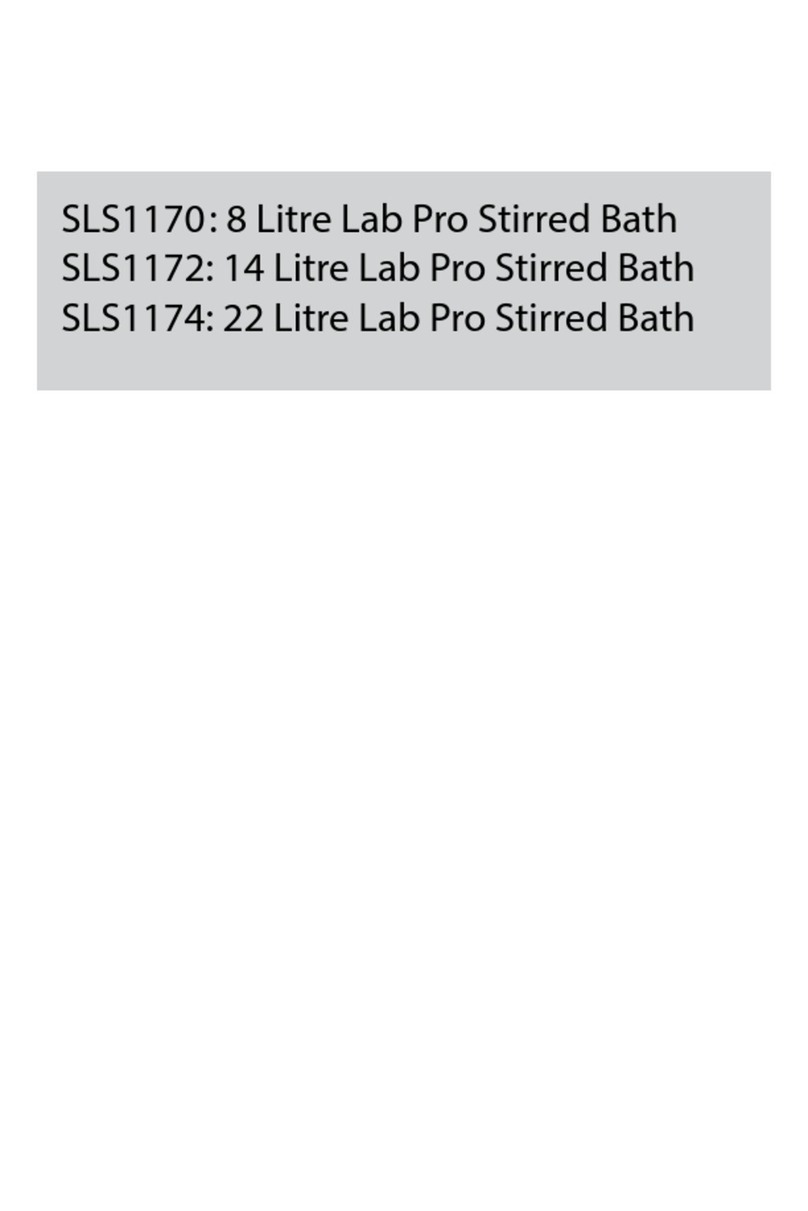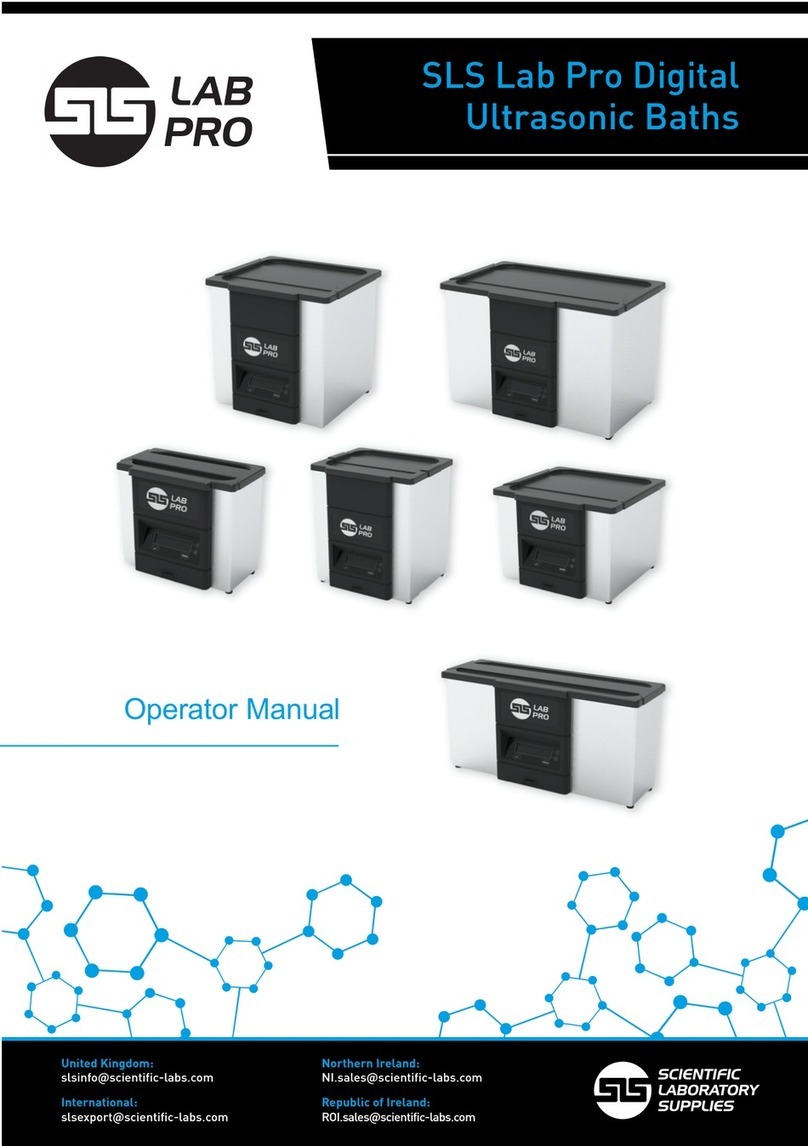
pH Meter Manual 9
Chapter 4
Calibration
4.1 pH Calibration
For best results, periodic calibration with known accurate
standards is recommended. Calibrate with standards that
bracket your intended measuring range while including a
neutral standard (pH 7.00 or 6.86). For example, if you
expect to measure samples from pH 6.2 to pH 9.5,
calibration with 4.01, 7.00, and 10.01 will work well.
Calibrate with up to 5 buffers. The non-volatile memory
retains all calibration values upon meter shut down.
The following calibration standards are automatically
recognized.
USA buffer group: 1.68, 4.01, 7.00, 10.01, 12.45
NIST buffer group: 1.68, 4.01, 6.86, 9.18, 12.45
See Section 5.6 to change the buffer group.
1. Press the MODE key as needed to select pH.
2. Dip the pH electrode into pH buffer and press the
CAL/MEAS key. The secondary display will lock
on the appropriate buffer value. Provide stirring for
best results. When the READY indicator appears,
press the ENTER key to accept. The primary
reading will flash briefly before the secondary
display begins scrolling the remaining available
buffers.
3. Rinse the pH electrode then dip into the next pH
buffer. The secondary display will lock on the
appropriate buffer value. When the READY
indicator appears, press the ENTER key to
accept. The primary reading will flash briefly then
display the percent efficiency (slope) before the
secondary display begins scrolling the remaining
available buffers.
4. To calibrate another buffer repeat step 3 or press
the CAL/MEAS key to return to the measurement
mode.
Note: The meter will automatically return to measurement
mode upon successful completion of the number of
specified calibration points. To specify a different number
of pH calibration points, see Section 5.6.
Additional Notes:
•A single point (offset) calibration is only allowed
with pH 7.00 or pH 6.86 buffers.
•When the first calibration value is accepted during
a new calibration, all prior calibration values are
erased.
•Press the CAL/MEAS key at any time to abort
calibration and return to measurement mode.
4.2 Temperature
Calibration
The thermistor sensor used for automatic temperature
compensation and measurement is both accurate and
stable, so require frequent calibration is not required.
Temperature calibration is recommended upon ATC
electrode replacement, whenever the temperature reading
is suspect, or if matching against a certified thermometer is
desired.
1. Connect the temperature probe to the meter and
place into a solution with a known accurate
temperature such as a constant temperature bath.
Note: To adjust the manual temperature
compensation (MTC) value, do not connect the
temperature probe.
2. Press the MODE key as needed to select pH or
mV/R.mV.
3. Press the CAL/MEAS key followed by the MODE
key. The primary display shows the measured
temperature while the secondary display shows
the factory default temperature.
4. Adjust the temperature using the /MI or /MR
keys. Press the ENTER key to accept or the
CAL/MEAS key to cancel. The meter allows an
adjustable maximum value of ± 5ºC (or ± 9ºF) from
the factory default temperature.

































